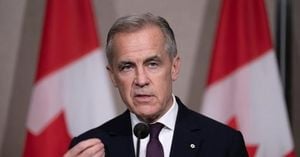A randomized double-blind trial has found promising results for hyperbaric oxygen therapy (HBO2) as a treatment for persistent symptoms following non-stroke brain injuries. With millions of individuals suffering annually from various types of brain injuries, the study began with the hope of exploring beneficial therapeutic avenues for those challenged by enduring cognitive and emotional symptoms.
Conducted by researchers affiliated with Intermountain Health, the trial included 49 participants who were randomly assigned to either the HBO2 group or the sham treatment group over the course of 12 weeks. The participants underwent two series of treatments, with the primary outcomes being measured using the Neurobehavioral Symptom Inventory (NSI), which assesses symptom severity from brain injuries. The results indicated significant improvements among those receiving HBO2, particularly noted at the three-month mark.
Brain injuries can result from diverse causes such as trauma, hypoxia, and even infections, and can lead to debilitating symptoms like headaches, anxiety, and memory issues.
Dr. [[author names]] stated, "The HBO2 group reported greater improvement in brain injury symptoms compared to participants who received 40 sham chamber sessions." This highlights the potential advantage of HBO2 therapy not just over placebo treatments but also suggests enhanced benefits with increased therapy sessions.
The methodology adopted for this trial was rigorous, with participants receiving 40 chamber sessions pressured to 1.5 ATA levels, which simulates conditions found far below the sea level and allows for increased oxygen absorption. The sham group underwent the same protocol, but with normal atmospheric pressure. While both groups reported improvements, those under the HBO2 group showed statistically significant advancements, with average symptom reduction of 10.6 points compared to 3.6 points noted within the sham group.
Finding optimal treatment strategies remains at the forefront of brain injury research, particularly for individuals experiencing chronic symptoms. Current therapies tend to focus on managing these persistent symptoms rather than providing restorative interventions.”
Regular improvements were reported throughout the life of the trial, with the most significant changes being recorded at the three-month assessment, implying sustained benefits well beyond treatment initiation. Authors noted, “Improvements from study participation alone appear to wane with time,” which invites questions on continued treatment adherence and the role of such therapies over time.
Evaluations at varying intervals also showed both groups continued to benefit from cognitive therapies applied. The averaged scores were indicative of maintained improvements; the HBO2 group even reported heightened benefits after additional open-label HBO2 sessions were offered.
Concluding, the study's authors are optimistic about the findings, stating, "Results suggest 80 HBO2 sessions may be superior to 40 sessions for treatment of long-term brain injury outcomes." This adds to the crux of the discussions concerning the best practices for treatment protocols for patient recovery from brain injuries.
Overall, the findings point to HBO2 as being not just beneficial, but potentially transformative for many who suffer from debilitating symptoms resulting from brain injuries. The growing support for hyperbaric oxygen therapy as part of clinical practice warrants increased attention, promising new hope for affected individuals.
Future research directions may involve longer follow-up periods to monitor sustainability of benefits and gathering data to tailor the number of HBO2 sessions best suited for achieving optimal outcomes for varying populations suffering from chronic brain injury sequelae.



